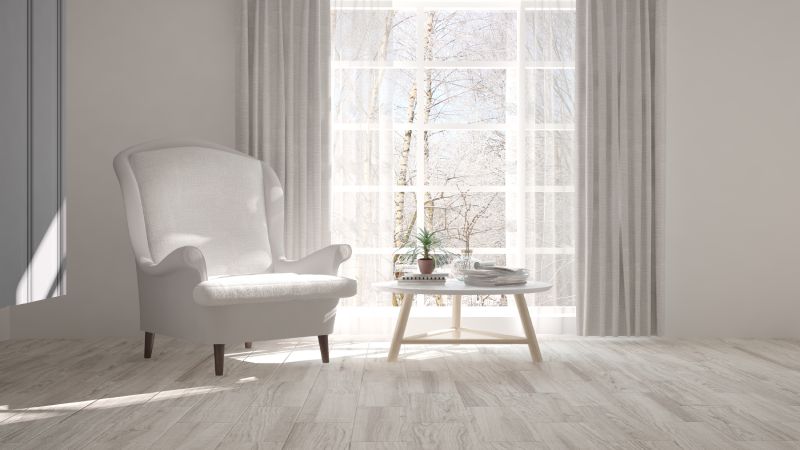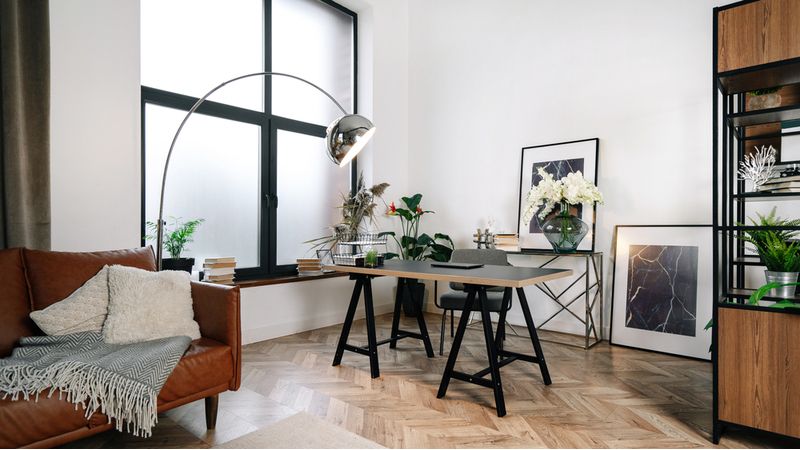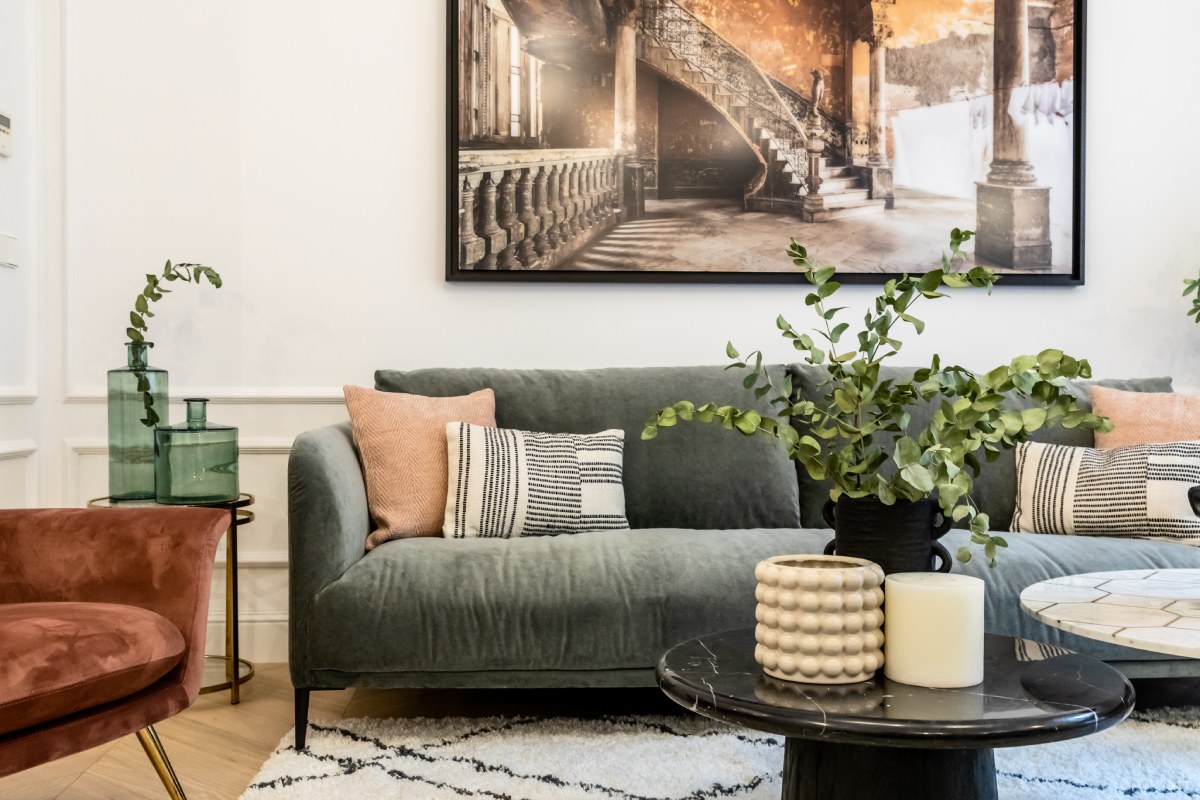Beyond the aesthetic part, the decoration of our house is the reflection of our state of mind. What’s more, our house is our refuge, right?, and therefore the guardian of our mental well-being. We do everything to lead a healthier life: we take care of our eating habits, we incorporate sport into our daily routine… So why not try to live in a healthier home and improve our quality of life?
Tips for a healthier home
Making your home healthier is not too difficult, nor does it involve making a large investment. Just follow these tips:
Natural light, energy source
Natural light not only illuminates your house and makes it appear more spacious. The benefits of sunlight are countless: it stimulates our defenses, improves cardiovascular health, improves psychological well-being, helps us fall asleep more easily, provides us with vitamin D and even helps regulate blood cholesterol levels. In short, natural light is essential for a healthy and healthy home. In addition, the sun’s rays that enter through the windows fill any corner with vitality and joy.
To accentuate this environment, try to make the walls white or with neutral colors and decorate with furniture in light tones. It enhances the light even more thanks to the mirrors. However, not all rooms can offer natural light. In that case, use LED bulbs as they are healthier for vision and consume less.
Ventilate every day
Just as you need to air yourself out and breathe, so does your home. In fact, it is necessary to correctly ventilate the house every day for ten minutes to clean the air inside and thus achieve a healthier home. By ventilating, the air in the house is oxygenated, bad odors are eliminated, the concentration of VOCs (volatile organic compounds) is reduced, toxic bacteria that may be in the air are eliminated and humidity is regulated.
In addition, and oddly enough, the amount of dust and the risk of allergies and respiratory problems are reduced. Open the windows and ventilate at the hottest time of day in winter and at night in summer.

A healthy home is a smoke-free home
Or, put another way, don’t smoke inside the house. Tobacco smoke remains in the air for a long time and burdens the environment, even if you ventilate the house daily. In addition, it causes everyone who lives at home to be at higher risk of developing lung problems.
Always try to have a stable temperature
A correct temperature in a house is not always easy to achieve. In winter there are days when it seems that the cold has taken over every corner and, in summer, for a few hours we feel like we are in a permanent sauna. However, sometimes the cure is worse than the disease. In other words, it is not necessary to go in a short-sleeved shirt in winter and almost with a scarf in summer because the air conditioning is working at full speed.
In fact, too sudden changes in temperature make us more sensitive to respiratory diseases, since the epithelium of the respiratory system is damaged, which different viruses and bacteria can take advantage of to infect us.
Thus, a rather cool temperature (no higher than 22°C) provides more thermal comfort, invigorates the body and lifts the mood. The comfort range is between 17°C in winter and 24°C in summer.
controls humidity
As with temperature, too much moisture is just as bad as too little moisture.
In an environment that is too humid, mold can appear and cause nasal congestion, throat irritation, eye damage, skin damage or even be responsible for severe allergic reactions. But it is that the excess of humidity also favors the appearance of the fungi. If there is not a thorough cleaning, they can develop allergies. Or if fungi appear in the kitchen they can contaminate food with bacteria. In addition, they can cause dermatological diseases.
In a dry environment there are also problems, because both the mucous membranes of the respiratory epithelium and the skin and eyes dry out, causing discomfort and, in the case of the respiratory system, making us more susceptible to infections.
To measure humidity you can use a hygrometer. The ideal level of humidity in the home should not be less than 35% or more than 50% throughout the year. In case it goes out of this range, you can correct it with dehumidifying or humidifying devices.
The importance of colors
The choice of colors when decorating should not be taken lightly. In fact, colors are emotions (or rather the reflection of them). And it is that chromotherapy studies the effects of colors on the mind and on our well-being. Thus, colors can change our mood, help fight a migraine, raise or lower body temperature and even whet our appetite. In a healthy home, the colors of the rooms are, therefore, very relevant. Let’s look at some examples:
- White : Makes everything look cleaner and helps us feel more cheerful.
- Blue : Perfect for relaxing and falling asleep, especially when combined with grey. In large bedrooms, it is perfect.
- Sand : It is a very versatile color that can be used in any corner of the house. Relax and calm anxiety.
- Green : It is the most relaxing color for the human eye. That is why it is capable of creating calm and at the same time fresh environments.
- Yellow : Brings joy. It is a warm color that, in its more ocher tones, is ideal for decorating living rooms.

no to chemicals
In a healthy home, cleaning should be done avoiding any product that contains a toxic component. When buying cleaning products, opt for ecological ones, those that have Ecocert or BDIH certification. Another alternative is to use natural products such as cleaning vinegar, baking soda, essential oils…
Order and cleanliness are key
You don’t have to be Marie Kondo to make your home healthier. However, order is a basic ally to achieve a better quality of life. Decorate with multifunctional pieces with built-in storage to make it easier to create tidy spaces.
When the house is tidy, cleaning is much easier (and faster). And it is that cleanliness and order go hand in hand. Good maintenance lays the foundation for a healthy home. Periodically check the house for cracks in the walls, leaky pipes, or moisture, and get everything fixed as soon as possible. Improve your home’s energy efficiency and reduce your carbon footprint by saving water and choosing appliances that save electricity.
Say goodbye to noise pollution
A healthy home is a quiet home. Try to reduce noise from both outside and inside. For example, when you have to change an appliance, try to make it as quiet as possible. Regarding the outside sound, you can try to isolate the interior with double-glazed windows. A quiet home promotes psychological well-being. On the other hand, noise pollution deteriorates the quality of life, especially if it makes it difficult to fall asleep at night.
Bet on the natural
Use natural and toxic-free materials to achieve a healthier home. Choose natural wood furniture (without varnishes or paints) as well as the floors, making the environments warm and welcoming. 100% natural fabrics such as cotton, linen, wool are breathable and comfortable to wear. Opt for them when you want to upholster a piece of furniture. Replace the plastic or Teflon pans with glass or ceramic containers. And paints that are mineral-based, breathable and ecological, such as silicate, lime or casein.
Decorate with plants, a must in a healthy home
Fill your house with plants and flowers, they improve health and enhance the feeling of well-being. In addition, there are many indoor decorative plants that purify the air and remove harmful chemicals, such as areca palm (Dypsis lutescens), ribbon palm (Chlorophytum comosum), sword fern (Nephrolepis exaltata), or lily peace (Spathiphyllum wallisii), among others.
